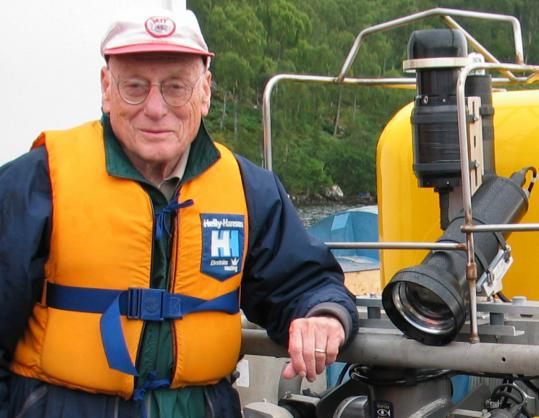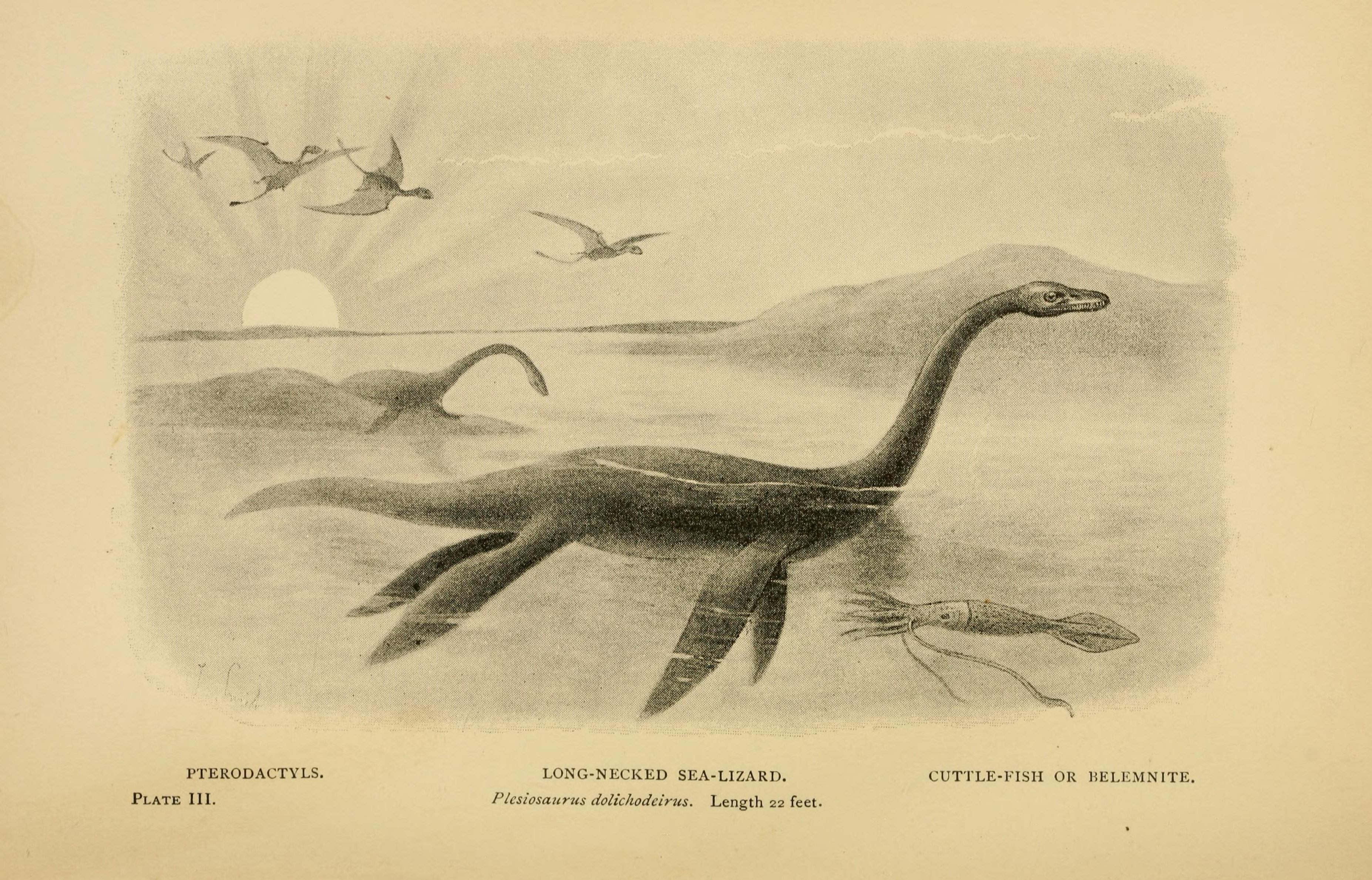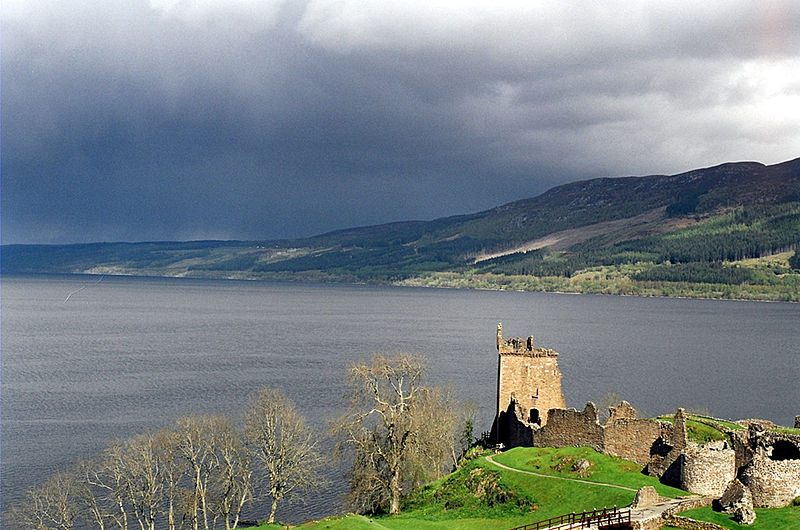The World-Famous Researcher Who Tried to Find the Loch Ness Monster with Dolphins

Dr. Robert H Rines at Loch Ness in Scotland. (Photo: Elijah T. Ercolino)
The 2009 New York Times obituary of Robert H. Rines logs enough accomplishments for the eulogies of several people. An M.I.T. graduate, he was an inventor and sonar pioneer. He was an internationally celebrated patent attorney who held many of his own. (Among them are a process for fish growth acceleration and a light communication system for “secret signaling”.) Rines composed music for the stage, including a song for “Hizzoner!” a television play about New York Mayor Fiorello H. La Guardia.
But perhaps his most fantastic pursuit was for that of the fabled Loch Ness Monster. Over his lifetime, Rines organized many high-profile expeditions to the loch. Once with funding from the New York Times.
He even tried to use dolphins.
Rines was on his honeymoon in Scotland in 1972 when he spotted a shape in Loch Ness that he believed could be the famous creature. A sonar and radar expert, he was uniquely equipped to pursue his obsession—often on expeditions armed with academic experts and state-of-the-art technology. Not the type to swat away the unconventional, Rines employed eclectic methods in his search. In the book Search at Loch Ness, which documents a highly-publicized 1976 hunt, Dennis L. Meredith writes that Rines had spent part of one summer trying to ply the animal with tempting smells and sounds:
“There were sex glands of eels, sea cows, sea lions; there were substances known to attract fish; and there were tapes of various sea animal sounds to be fed into underwater speakers.”
In 1979, Rines enlisted new team members in his quest: a pair of bottlenose dolphins.

A Plesiosaurus from the 1896 book “Extinct Monsters”. The Loch Ness Monster is often depicted as looking like a Plesiosaurus. (Photo: Biodiversity Heritage Library/flickr)
The New York Times News Service reported that Rines was training the dolphins at a Florida facility to wear harnesses and vests tricked out with strobe lights and miniature cameras. According to an account in a June 1979 issue of New Scientist, special lightweight cameras were designed to fit inside a cylinder just 10 cm in diameter. Everything was “falling into place,” according to Rines, and the dolphins had succeeded in trailing sea turtles and sharks.
“The obvious problems of using the dolphins in fresh water and at relatively lower temperatures have received very careful attention,” Rines told the news service. “With unanimous agreement by our Navy and other institutions and other experimenters in this area that there is absolutely no danger or discomfort or strain on the dolphins in operating as we propose at Loch Ness.”
After training, the dolphins were slated to go through a period of “acclimation to colder water” before being spirited away to the chilly shores of Loch Ness.
And according to declassified documents, Rines and his cohorts had a possible high-profile conspirator in the plan, namely the British government.
In 2006, The Sunday Times reported that declassified documents revealed a 1979 letter penned by David Waymouth, a civil servant at the Department of the Environment to an official at the Scottish Home and Health Department. (The National Archive of Scotland has many official records on file pertaining to the Loch Ness monster, from communications parsing techniques for discovering Nessie to whether or not legal protection should be extended to the cryptid.)
“This department is presently considering the issue of a licence to import two bottle-nosed dolphins from America for the purpose of exploring Loch Ness, a scheme which has already resulted in opposition from the Scottish Society for the Prevention of Cruelty for Animals.” He went on to write, “Clearly, however there are other factors, mainly political, that you might wish to consider before the licence is issued.”
Per The Sunday Times, no response to the proposal was recorded. And in the end, it didn’t matter, because tragedy cut the project short.

Anthony Shiels’s 1977 photo, also known as the “Loch Ness Muppet”. (Photo: Public Domain/WikiCommons)
On June 27, 1979, wire news reported that one of the dolphins had died. The dolphin “was organically sound and died from unknown causes” according to an inconclusive necropsy.
In a Boston Magazine profile of Rines, the monster-hunter recalls the troubling incident:
“He was constructing a saltwater pool he planned to float in the loch that would allow the dolphins’ skin to recover from the freshwater exposure when one of them died on a stopover at the Hull Aquarium. Rines believed the dolphin, who had never before been separated from its handler, had died of ‘a broken heart.’ He was so upset that he shipped the other dolphin back to Florida and called off the scheme.”
Rines’ obsession may sound incredible today, but taken in historical context it doesn’t seem so fringe. While plenty of experts and publications scoffed at the idea of a large aquatic reptile swimming around a Scottish loch, plenty did not.

Loch Ness and Urquhart Castle. (Photo: Sam Fentress/WikiCommons CC BY-SA 2.0)
Rines’ 1976 expedition to hunt Nessie, for instance, was funded in part by the New York Times. The 1977 book documenting the expedition was published by a Times owned imprint. From the book:
“The Times, known as the ‘Gray Lady,’ was apparently ready to kick up her skirts a bit; she would give Rines and the Academy $20,000, and in turn would receive first newspaper rights to any pictures, a 24-hour head start on any major stories, and the sole rights for her reporter and photographer to go out in the research boats with the expedition members.”
Experts from M.I.T and the Royal Ontario Museum in Toronto were members of the expedition and zoologists from Harvard, Cambridge and the Smithsonian Institute were advisors. The scientists employed black and white color underwater cameras and lights, sonar, and 24-hour video surveillance. The National Geographic Society was concurrently sponsoring a Nessie hunt, and the two teams celebrated July 4th together with a fife and drum parade, according to one report.
Rines died at 87 and taught at M.I.T. until the penultimate year of his life. He never gave up his belief in Nessie, but eventually concluded after so many years of searching, that she had finally died. So far, though, no one seems to have found her bones.
Update, 6/23: An earlier version of this story incorrectly used the word “autopsy” to describe the necropsy performed on the dolphin. As one reader noted, if it was an autopsy, another dolphin would be the one performing it. We regret the error.



Follow us on Twitter to get the latest on the world's hidden wonders.
Like us on Facebook to get the latest on the world's hidden wonders.
Follow us on Twitter Like us on Facebook